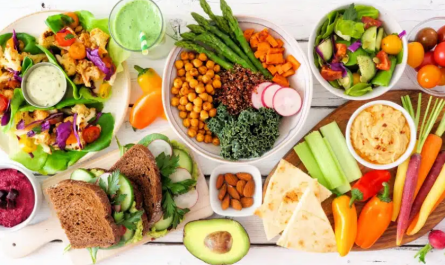Eating healthy doesn’t mean spending a fortune. With smart planning, you can maintain a nutritious diet while staying within budget. This guide will share meal plans and actionable tips to help you eat healthy without overspending.
1. Plan Your Meals Around Affordable Staples
Start by focusing on inexpensive, nutrient-dense staples. Foods like rice, beans, oats, eggs, frozen vegetables, and canned tuna are affordable yet packed with nutrients. Build your meals around these basics to keep costs low and nutrition high.
2. Create a Weekly Meal Plan
A meal plan helps eliminate impulse buying and food waste. Write down a week’s worth of meals before you go grocery shopping. Choose recipes with similar ingredients so you can buy in bulk and save. Stick to your shopping list to avoid extra purchases that don’t align with your plan.
3. Shop Seasonally and Locally
Seasonal fruits and vegetables are usually cheaper and fresher. Visit local farmers’ markets or shop for what’s in season at the grocery store. In-season produce is not only affordable but often higher in nutrients and flavour.
4. Buy in Bulk
Buying staples like grains, beans, and frozen vegetables in bulk saves money. Bulk items can often be stored for a long time, making them a budget-friendly option. Look for bulk bins at grocery stores or buy large bags of frozen veggies that you can use in multiple meals.
5. Opt for Frozen Fruits and Vegetables
Frozen produce is just as nutritious as fresh and usually more affordable. They’re pre-washed and pre-cut, making meal prep easier. Stock up on frozen fruits and vegetables to have healthy options on hand for quick meals.
6. Prepare Meals in Advance
Meal prepping saves both time and money. Set aside time each week to prep meals or ingredients. This can help you avoid the temptation to order takeout on busy days. Batch-cook meals that you can refrigerate or freeze for later.
7. Choose Plant-Based Proteins
Beans, lentils, chickpeas, and tofu are affordable sources of protein compared to meat. Adding more plant-based proteins to your diet can lower your grocery bill. Try using beans and lentils in soups, salads, and grain bowls for a filling and nutritious meal.
8. Limit Processed Foods
Processed foods, especially pre-packaged snacks, tend to be more expensive and less nutritious. Stick to whole foods like vegetables, fruits, grains, and proteins. Not only will this save you money, but it will also improve your health.
9. Make Your Own Snacks
Buying snacks can add up quickly, but making them at home is often cheaper and healthier. Try making homemade granola, roasted chickpeas, or veggie sticks with hummus. Preparing snacks in advance will prevent last-minute convenience buys.
10. Use a Shopping List and Stick to It
Creating a shopping list based on your meal plan is crucial to sticking to a budget. Only buy what you need for the week’s meals and snacks. This helps avoid unnecessary purchases and keeps you on track financially.
Sample Weekly Meal Plan
Breakfasts:
- Overnight oats with fruit
- Scrambled eggs with spinach
- Greek yoghurt with granola and berries
Lunches:
- Chickpea and vegetable stir-fry over rice
- Lentil soup with a side salad
- Veggie and hummus wrap
Dinners:
- Bean chilli with cornbread
- Spaghetti with marinara sauce and a side of steamed broccoli
- Rice bowl with tofu, mixed veggies, and a peanut sauce
Snacks:
- Homemade trail mix
- Apple slices with peanut butter
- Carrot sticks with hummus
Conclusion
Eating healthy on a budget is possible with careful planning, smart shopping, and a bit of meal prep. By using affordable staples, buying in bulk, and focusing on plant-based proteins, you can enjoy nutritious meals without overspending. Start with a few small changes, and soon you’ll have a budget-friendly, healthy eating routine that works for you.







